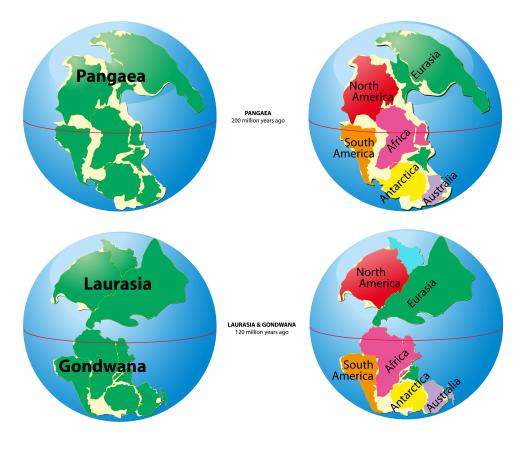What Was the Permian Period?
 Michael Anissimov
Michael Anissimov
The Permian period is the last of six periods making up the Paleozoic era, the oldest era of multicellular life on Earth, extending from about 542 to 251 million years ago. The Permian period itself extends from about 299 to 251 million years ago.
During the Permian period, all land masses except for part of East Asia were aggregated into the supercontinent Pangaea. This minimized the amount of warm shoreline habitats available, and created temperature extremes, including the greatest desert in the history of the planet: the center of Pangaea. So much land promoted great temperature extremes in general, and terrain hostile to all but the most rugged of life.

Land fauna continued to diversify during the Permian period, paving the way for the evolution for large reptiles. The mammal-like carnivorous reptile Anteosaurus emerged in the early Permian period. In some respects the animal resembles a boar in appearance. It had a long tail and weak limbs, suggesting a semi-aquatic lifestyle similar to that of a crocodile. It also had a bony plate on its skull, suggesting it engaged in head-butting behavior, probably for disputes over territory. The hard-shelled egg, having evolved in the earlier Carboniferous period, allowed tetrapods to easily lay eggs on land without their drying out.

The Permian period opened with an Ice Age, but quickly got more arid and hot, until by its end it was the hottest era in the last 500 million years or so. Beetles and flies evolved during the Permian period. Plant diversity and oxygen levels were high near the coasts, where there were expansive swamp forests. The first fully terrestrial animals evolved, including large herbivores and carnivores. Labyrinthodontia, animals that look like an intermediary form between bony fish and crocodiles, emerged.
The Permian period ended with the Permian-Triassic extinction event, called "the mother of all mass extinctions". 96% of marine genera and 70% of land genera were exterminated. 99.5% of individual organisms probably died. Like most of the old mass extinctions, we aren't sure exactly what caused it, though asteroid impacts, climate change, methane hydrate release, and vulcanism have all been blamed by various scientists.
AS FEATURED ON:
AS FEATURED ON:












Discuss this Article
Post your comments